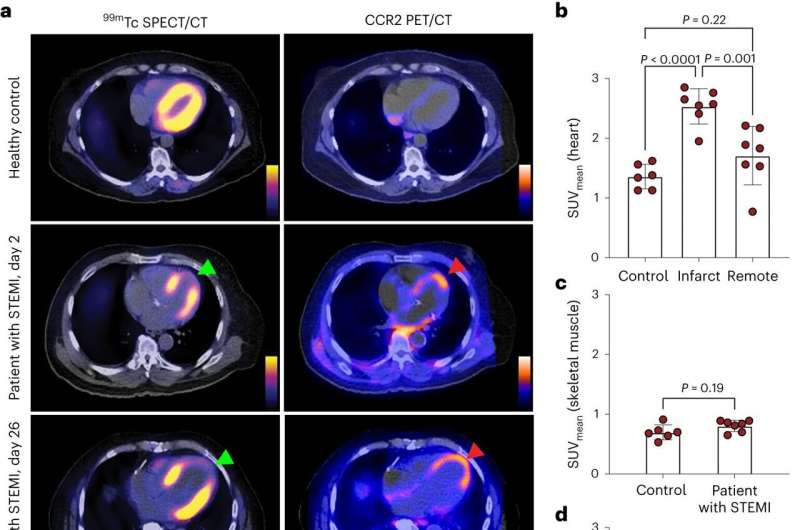This article has been reviewed according to Science X's editorial process and policies. Editors have highlighted the following attributes while ensuring the content's credibility:
fact-checked
trusted source
proofread
Noninvasive technique helps visualize inflammatory cells in human heart

A study in Nature Cardiovascular Research by researchers at Washington University School of Medicine in St. Louis explores a new, noninvasive imaging technique that helps scientists visualize immune cells in the human heart.
Inflammatory immune cells contribute to cardiovascular disease, increasing the risk of a heart attack and heart failure. However, technologies to identify the immune cell types responsible for inflammation in the muscular tissue of the heart—the myocardium—are limited. The researchers developed a radiotracer to help visualize a subset of inflammatory immune cells marked by the expression of C-C chemokine receptor 2, which includes harmful populations of monocytes and macrophages.
The research was performed by Yongjian Liu, Ph.D., a professor of radiology at Mallinckrodt Institute of Radiology (MIR), and Kory J. Lavine, MD, Ph.D., an associate professor of medicine, of developmental biology, and of pathology and immunology, in collaboration with colleagues from the PET Radiotracer Translation and Resource Center and Immuno-Fib HF Network.
The research team established the feasibility of noninvasively visualizing inflammatory immune cells using positron emission tomography in patients who had suffered heart attacks. Their findings may help identify individuals who may benefit from immunomodulatory therapies.
The noninvasive imaging technology developed by the research team "could not only identify individuals best suited for immunomodulatory therapies, but also assess treatment outcomes for better patient management," concluded the authors, pointing to the potential value for enriching clinical trials and providing precision medicine as the technology is developed further. Future studies will focus on the expansion of the patient population and evaluate prognostic implications of the imaging on cardiac remodeling, function and clinical outcomes.
More information: Kory J. Lavine et al, CCR2 imaging in human ST-segment elevation myocardial infarction, Nature Cardiovascular Research (2023). DOI: 10.1038/s44161-023-00335-6





















